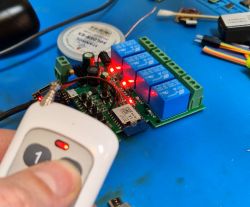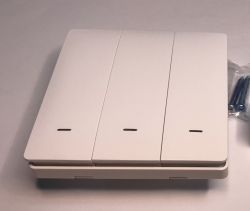FAQ
TL;DR: On modest hardware (e.g., 8 GB RAM), Docker keeps HA/Node‑RED light; "RAM not used is RAM wasted." This FAQ shows how to bridge RS485 via Node‑RED+MQTT and choose HA installs without overcomplicating. [Elektroda, xury, post #19669356]
Why it matters: Makers integrating RS485 devices need a clear, low‑overhead path into Home Assistant without mandatory Wi‑Fi modules.
Quick Facts
- With auto‑direction USB‑RS485 adapters, no special drivers are required on the host. [Elektroda, starob, post #19674006]
- Supported options include Debian + Supervisor and HA OS (Generic x86‑64) on x86 hardware. [Elektroda, starob, post #19673175]
- Example VM showed about 20% HA RAM use, useful for right‑sizing memory. [Elektroda, starob, post #19669333]
- Node‑RED can host a full dashboard and replace HA’s UI if needed. [Elektroda, xury, post #19669303]
- In HA, Node‑RED and MQTT add‑ons make custom protocol bridging straightforward. [Elektroda, starob, post #19666484]
Can I integrate RS485 modules with Home Assistant without Wi‑Fi?
Yes. Use Node‑RED to implement your RS485 protocol and present data to Home Assistant via MQTT. Treat HA as the frontend while Node‑RED handles device logic. You can also use Node‑RED’s own dashboard if you prefer. "You can easily create your own communication protocols" and surface them in HA with MQTT. [Elektroda, starob, post #19666484]
Do I need special drivers for my USB‑RS485 adapter?
Not if the adapter controls TX/RX direction automatically. In that case, no special drivers are required. Your system will see a serial interface you can use from Node‑RED or other tools. Choose auto‑direction hardware to avoid manual DE/RE control. [Elektroda, starob, post #19674006]
Should I put all automation logic in Node‑RED and use HA only as a UI?
Use both wisely. Build flows in Node‑RED for devices without native HA support, and use HA’s built‑in integrations where available. "Integrate only devices without HA support" in Node‑RED to reduce complexity and maintenance. This balances flexibility with stability. [Elektroda, starob, post #19668988]
Is Node‑RED enough to replace Home Assistant?
It can be. "NR can completely replace HA because there is the possibility of installing a dashboard." Many pair NR with HA since they work well together. Start with HA’s add‑on for Node‑RED, then decide whether you prefer NR’s dashboard or HA’s UI. [Elektroda, xury, post #19669303]
What’s the simplest supported way to install HA on a small x86 PC?
Two practical paths: Proxmox + HA for easy VM snapshots, or a Debian install with HA Supervisor. The Debian Supervisor path is supported again. If resources are tight, start with what you have and evaluate performance before optimizing. [Elektroda, starob, post #19673175]
Docker or Proxmox: which is better when RAM is limited?
Both work, but many prefer Docker on lean systems. "I prefer the second method, as it is a waste of RAM on virtual systems." Docker shares the host kernel, reducing overhead. Proxmox adds VM isolation and snapshots at a RAM cost. [Elektroda, xury, post #19669303]
How does Docker compare to VMs in memory usage?
Docker containers reuse the host kernel and libraries, reducing duplication. One user runs Domoticz, HA, Node‑RED, Plex, Grafana, and InfluxDB on an 8 GB NUC. "RAM not used is RAM wasted." Containers help fit more services on modest hardware. [Elektroda, xury, post #19669356]
Can I install HA directly (Generic x86‑64) instead of virtualizing?
Yes. It’s not always better, but it works. Virtualization lets you keep separate test and production systems and snapshot them easily. If you later need a full Linux host for other tasks, VMs avoid buying another box. [Elektroda, starob, post #19674006]
Will HA on Linux still be supported?
Yes for Debian with Supervisor. Support shifted, but "they have changed their mind and it is possible on Debian." Check HA’s current guidance, but Debian + Supervisor is a valid path again. [Elektroda, starob, post #19673175]
How do I back up and restore HA safely?
Use HA snapshots, and copy them off the machine. Restore from within HA after reinstalling the base system. With virtualization, take full VM snapshots for one‑click rollback. Edge case: if you do not copy snapshots externally, a disk failure leaves nothing to restore. [Elektroda, starob, post #19674201]
How do I start: RS485 → Node‑RED → MQTT → Home Assistant?
- Install HA and enable the Node‑RED and MQTT add‑ons.
- Implement your RS485 protocol in Node‑RED flows.
- Publish device states via MQTT and display them in HA.
This pattern decouples transport from UI and scales well. [Elektroda, starob, post #19666484]
Is Home Assistant easier to learn than openHAB?
They’re comparable, but HA tends to be easier for newcomers. "HA and OH are comparable, but it seems to me that HA is easier to learn." Pick the ecosystem that fits your habits and hardware. [Elektroda, starob, post #19666484]
How do I surface Node‑RED logic into HA’s UI?
Publish Node‑RED outputs to MQTT topics. Add HA entities that subscribe to those topics. Use HA’s Lovelace dashboard for controls and status. This keeps HA as the frontend and Node‑RED as the logic engine. [Elektroda, starob, post #19666484]
Should I just start with my existing hardware and refine later?
Yes. Get HA running with your current setup and test real workloads. It might feel a bit “square,” but you will quickly learn what to optimize next. Snapshot‑friendly setups ease iteration and recovery. [Elektroda, starob, post #19673175]
 .
.






